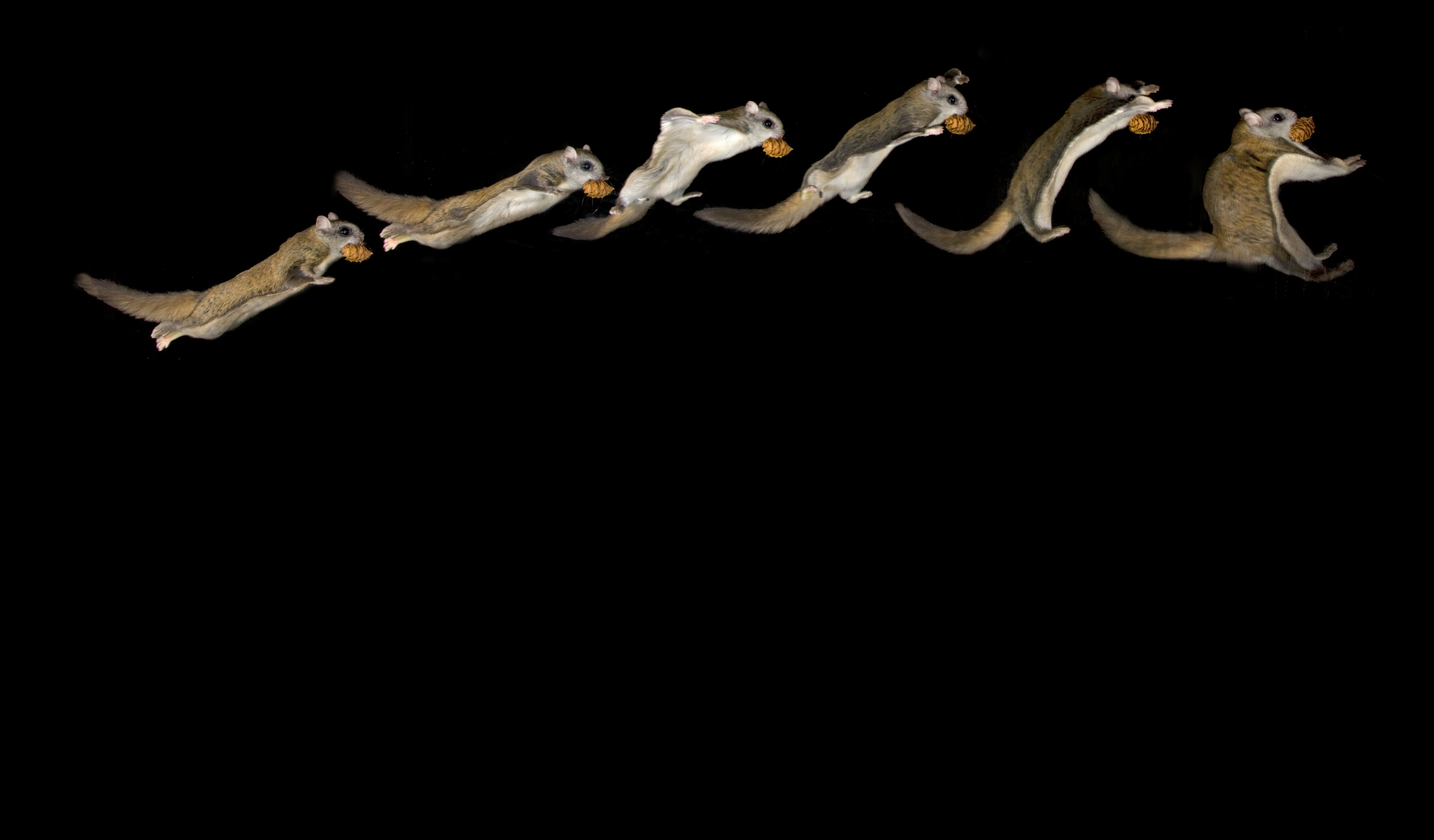For decades, scientists thought that flying squirrels could do little more than glide, controlling their descent from a high point to a low point. After all, that’s what the squirrels did when observed. But most detailed observations took place in laboratory settings.
The laboratory is not where Alexander Badyaev prefers to be. Badyaev is a University of Arizona professor of evolutionary biology. He was born in Russia, so, when pronouncing the word “squirrel,” he endearingly calls to mind Boris Badenov.
He regularly conducts northern flying squirrel research in the forests of Montana. A few years ago, Badyaev spent night after night staking out a corner of the Bob Marshall Wilderness. He came to learn the habits of a particular female — when she was active, which trees she launched herself from. And he knew that in mating season, male squirrels would compete to get her attention.
It was there, on a freezing February night, that Badyaev saw the object of his attention leap up from a tree branch, unfurl her patagia — the winglike material that stretches from front legs to back legs — and soar away in level flight.
It was the start of an aerial demonstration that Badyaev captured with his camera. A pair of squabbling male squirrels glided more than 60 feet with little observable loss in altitude. Other flying squirrels made 180-degree midair turns to escape the clutches of hungry owls.
Badyaev’s images showed that they were capable of complex aerobatics. But how?
More than 15 years ago, after studying hundreds of specimens, Dick Thorington, the Smithsonian’s resident squirrel expert, had noted an odd bit of cartilage at the end of the wrists of flying squirrels.
“What Dick postulated at the time was that these were used for maneuverability in flight,” said Badyaev, who was recently in Washington for a National Science Foundation meeting.
The cartilage is similar to the upturned vertical tips you see at the end of wings on passenger jets.
“By adjusting the angle of the wing tip, the squirrel can generate a substantial lift, modifying the speed, distance and trajectory of its glides midflight,” Badyaev later wrote.
What’s more, the network of muscles that crisscross the patagium can reshape the squirrel’s “wings,” creating a dynamic surface.
Squirrels can even fly upward and increase their speed. They do this by carefully controlling the air that swirls on either side of their patagia. Vortices of turbulence on top of their patagia are tamed with special hairs on their shoulders that they raise and lower. Squirrels can also direct air under their patagia, giving them lift.
“They’re really good at directing airflow,” Badyaev said. “That’s a good compensation for lack of flapping. They’re probably better at it than bats. Bats are maneuverable, but that’s because they flap like crazy.”
In contrast, like an airplane that is able to alter its wings midflight, flying squirrels continually adjust their patagia.
Badyaev made other observations. Since flying squirrels are clumsy and vulnerable on the ground — they have to drag around their parachute-like patagia – they are able to leave it quickly. They use their muscular hind legs to leap into the air, gaining altitude before unfurling their furry wings and gliding away.
“It turns out their jump up is incredibly powerful,” Badyaev said. They routinely leap vertically seven feet, bursting from the snow and creating a sound that Badyaev likened to a champagne cork popping.
Badyaev’s work is a testament to hours spent in the field — and to the flying abilities of squirrels. Perhaps aeronautical engineers could even learn something
“I don’t know if putting mittens on wings of aircraft would work,” Badyaev joked. “That’s what squirrels do.”



